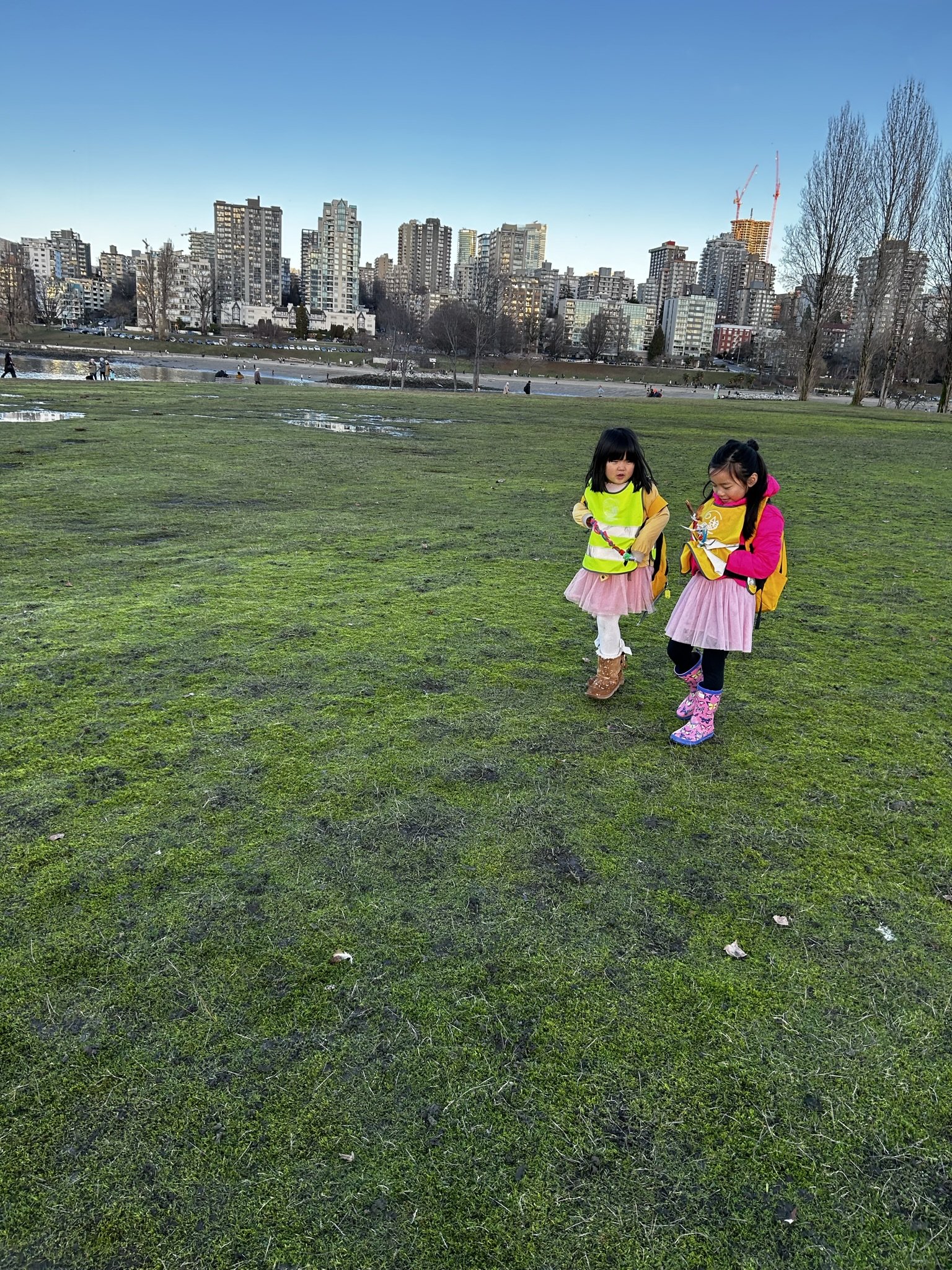Winter 2023
Level 3
January 7
Trail Safety and Etiquette
This first class of winter, we started our class with doing our land acknowledgment, and learning about safety rules along the way. How to prepare to winter and outdoor school? How to show respect to nature and others? What is the right closing for winter? We will continue to review our rules and land acknowledgement before each class.
Goodbye autumn, hello winter! What are the signs of the winter? A scavenger hunt is a fantastic way to kick monotony to the curb and unleash our winter spirit in the great outdoors. Let’s rock to get ready for this wonderful season together!
January 14
Winter Survival 101
This week we did a mini experiment using a scale on measuring the weight of different things we found from nature such as rocks, leaves and branches. We examined and wrote down which item is heavier, which one is lighter, and which two items are balanced, and discussed what makes them different in weight, such as components and density. We also explored how animals survive in winter and how human learn from these adaptions, such as insulation, habitat and source of energy.
Talking Stick
Today we learned that the talking stick is a traditional object used by many First Nations communities in Canada. In some First Nations cultures, the talking stick is considered a sacred object and is treated with great respect. The design and carving on the stick often represents the community or the individual who created it, and may contain spiritual or cultural symbols. We made a talking stick by ourselves, gave a short speech of showing our respects to the First Nations people.
January 21
Turtle Island
We draw a turtle on the North American map to see what we think the turtle looks like, and then we listened to a First Nation story 'Turtle island creation' to understand how the people draw their first map. We learned from the story and game about how First Nation people love the land and how should we face the habitat destruction, famine, overpopulation problems.
January 28
The Firekeeper
Today we visited a wetland park to learn about the plants endemic to the wetlands and we started the lesson from a First Nation story ‘How coyote stole fire’. We listened to the story and understood how to maintain the relationship between people, animal and the nature. We then learned the concept of heat and what is heat transfer. We text the temperature in our jackets, and compare with the temperature outside.
February 04
Solar Energy. Can you capture it?
Integrating First Peoples story ‘how raven stole the sun’ and leading to the question: can you capture solar energy? We investigated various heat sources, made a solar balloon using the materials we bring and from the woods, observed the bag began to rise, felt the temperature difference before and after, and finally understood the concepts of buoyancy and how solar energy works.
February 11
February 18
Cloud and Wind
Today we became little meteorologists, investigated about weather, experienced various weather phenomena such as wind and clouds, and learned how to predict the weather. We also made a simple anemometer using materials from the forest to measure the wind. We exercised our powers of observation, inquisitiveness and problem-solving skills, as well as exercised our bodies and increased our self-confidence while walking in the forest and doing outdoor activities.
February 25
13 Moons on Turtle's Back
"13 Moons on Turtle's Back" is a First Nations legend that tells a story about the moon. They divided the year into 13 months, each of which was named after a different name and meaning. The main character of the story is a giant tortoise, which is considered an important symbol in the First Nations culture. In this legend, the giant tortoise carries the weight of 13 moons, and also represents time and change. We listened to the story, played a puzzle game based on the legend, learned their history and knowledge, and understood why we need to show our respect and reverence for the natural world and ecosystem.
March 4
Adaptation Exploration
Today our nature classroom is the Vandusen Garden, where we are learning about the adaptation exploration taking advantages of the variety of plants and animals in the garden. We looked for waxy leaves, dropping branches, Red-eared slider and many others. We now understand living things have adaptations that help them survive and reproduce in their environment, and adaptations can be either structural or behavioral. A class that exercises all aspects of physical, observational and thinking skills!
Final Project
After a term’s learning of "Aboriginal Legend", "Natural Physics" and "Outdoor Exploration", our physical strength, observation skills, critical thinking , sense of cooperation have been comprehensively and systematically exercised and enhanced!
Goodbye Winter, Hello Spring!










